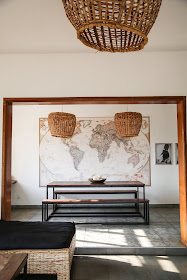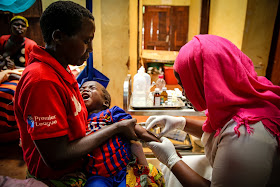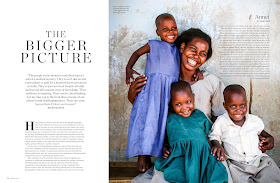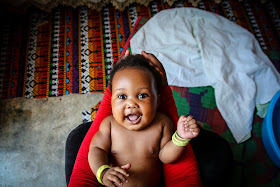Over the past few years I’ve been receiving a reasonable amount of messages from people that would like to know a bit more about humanitarian
photography and storytelling as a career. I love hearing from you - what an
honour! During this particular season of life though, it’s hard to reply to
every single one in depth like I’d like to – so here goes! My attempt to answer
the most frequently asked questions via blog. Please feel free to reach out if there
is anything else I’ve forgotten!
1. How
did you get into humanitarian photography/storytelling?
I remember having an interest in photography as
young as 7 years of age. I used to feel like something couldn’t be fully remembered
unless it was captured – frozen forever in time by the click of a finger. By the time I reached high school I’d had a few
more of those, “have to grab it” moments and so decided to take photography as
one of my options. It was there I learnt the art of using a film camera and
developing my own images in the Darkroom. I graduated
from university 14 years ago with a Bachelor of Communication Studies majoring in
Public Relations and Advertising Creativity. At first, I did fashion, beauty
and lifestyle PR for agencies and worked in both New Zealand and Dubai. Then, in
2010 my husband and I moved to Uganda and I worked “in-house” for the first
time. I found the experience so rewarding and loved getting to know and focus
on one brand.
During that season in Uganda, I met two people that changed the course of my
life forever. Firstly, a former child soldier called Ivan, and secondly, my
sponsor child Whilifred. When I got home to New Zealand I began volunteering with
Tearfund/Compassion and a year later was offered the Media and Communications
Manager role. Just before I started, I did two six week hobby courses on
photography that were really significant in teaching me about the digital age
of capturing images. I had switched from
fashion weeks to famines and am forever grateful I did.
2. How
did it all begin?
My
first day on the job for Tearfund was 8 years ago in Kolkata, India. I was there
to meet with some of the 2 million kids in our care through child sponsorship
and to meet with an organisation doing undercover anti-trafficking work. The
next week, my boss had a family emergency and had to race back to New Zealand. Before
she left she looked me up and down and asked if I would be willing to go into
Bangladesh to capture some stories and images for Tearfund’ s next campaign. I said yes. The next day I found myself on a
flight to Dakar where I landed into a country that was mid coup and swarming
with UN peacekeeping troops before being driven 8 hours into the depths of the jungle. In Bangladesh I showered with a cup and a
bucket, slept in a house with no door at the entrance or to my bedroom and was
the only white person some of our 30,000 micro enterprise beneficiaries had
ever seen.

That first trip was the beginning of what would be the adventure of a lifetime.
Since then I have had almost every immunisation on the planet for every
possible tropical disease. I’ve travelled to 37 countries and worked for over 50
incredible NGO’s, charities and non-profits both photographing and interviewing
the people that benefit from those programmes. My
work
has taken me to some of the most challenging environments documenting famine,
refugee settlements, post war environments, child sponsorship, micro-enterprise,
trauma counselling and disaster zones. My job is to bring the amazing
work of these organisations to life.
3.How
did you jump from working in–house to going freelance?
After
three years at Tearfund, Tim was offered a job back in Uganda. I was grateful
to work out an arrangement where I would stay on with Tearfund/Compassion part
time and work from the field. This is still my arrangement to this day. Being
based in the field meant having a lot more opportunities to travel (cost effectively)
thrown my way. It also caught the attention of the Integral Alliance (a network
of 27 aid and development agencies). A couple of them started contacting me to
see if I might have capacity to photograph/tell stories for them. I did! After
working for about 10 different NGO’s I decided I should probably get a bit more
professional and set up a website. Over the last six years living here in
Uganda it’s been incredible to network with a huge range of incredible
organisations – most of whom are looking for help to bring their work to living
colour. Because I am someone with a Western eye that lives locally here in
Uganda, the organisation doesn’t have to pay $1500-2000 in flights just to get
me to the location. I mainly travel to Africa/Middle East and there is so much
work to do that I take on about 1 in every 3 jobs offered.

4. What
do you shoot with?
I own a Canon 5d and Canon 6d and shoot with both most trips.
I own a 24-105mm Canon lens, 50 mm Portrait Canon lens, 16-30mm Wide Angle Canon
Lens and a 70-300 Tamron telephoto lens.
PLEASE KNOW, I am the most low-tech photographer you will ever meet. I don’t own
a flash, reflector, ND filters or any fancy equipment. I’ve used the same camera for almost 5 years and
the last time I bought a new lens was 2 years ago. I do this for a reason. It’s
because I want things to look as real as possible. I don’t want to manufacture
or over compensate for what is naturally there.
I don’t want things to feel fake, overly posed or overly edited. I want to fly under the radar wherever I go
just a small backpack.
5.Advice
for anyone wanting to get into this line of work?
- Hone your craft. I did two six-week night
courses at a university for two nights a week and it was the best investment I ever
made. My lecturer taught me how to solve the technical problems I’d been having
and that honestly set me free when I first started out! Even to this day I am consciously
trying to get better year on year and take active steps to do so.
- Study/Learn something wider than just
photography. It would be a rare NGO/non-profit/charity that would be hiring a full time “photographer” in-house. They would
probably be hiring a Creative Manager or a Communications Specialist in which
case photography might be one of the core competencies. Next to photography, I’d
say that being a good writer would be top of the list for many of these
organisations.
- If you only want to go freelance
consider having a ‘core’ business ie:family photography and then doing humanitarian
stuff on the side to relieve pressure.
- Give of your time. Find a local NGO in
your community that might benefit from having a gift of some complimentary
photography. Start there and if you like it, perhaps try offering that to a
smaller NGO overseas that you have an existing relationship with.
- Consider living in a developing
country – this has been huge for me. The cost of flying a Westerner from the
USA or Australia to a developing nation is astronomical. It helps a lot to take
that part out of the equation.

6. What’s it really like?
I’ve suffered near burnout,
got pneumonia, gained weight, lost weight, got more wrinkles and grey hair than
I should and had a lot of sun damage done to my face. I spend myself, but I do
it for a cause I believe worth spending myself on. What keeps me doing this kind of work is primarily my faith in a God that
asks us to be his hands and feet on the earth. A God that cares deeply for this
heaving mess of humanity. I’ve never taken one photo or story for granted
and I am in a constant state of prayer in the field as I try my hardest to
bestow dignity whilst showing tremendous human need. am forever grateful to be
used to raise awareness and much needed funds for those that truly need it. There’s
nothing I would rather do. I am humbled beyond belief to be entrusted to do it.
7. Does
it pay well?
No. If you want to get rich, this is not the field to do it. I work for
charities that have to account for every single dollar that goes out the door. Not
only that, but I WANT every single dollar possible to go to their beneficiaries
who need it far more than me. I have tried really hard to find a personal
balance for me where I feel like I’m being paid a fair wage for the work I’m
doing (and it’s worth it to be away from my kids) whilst also feeling like I’m
not ripping anybody off. But then, why settle for cash when joy is on the line.
Xo
Helen























































